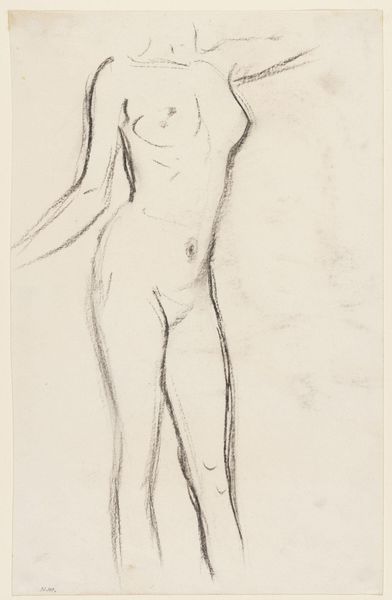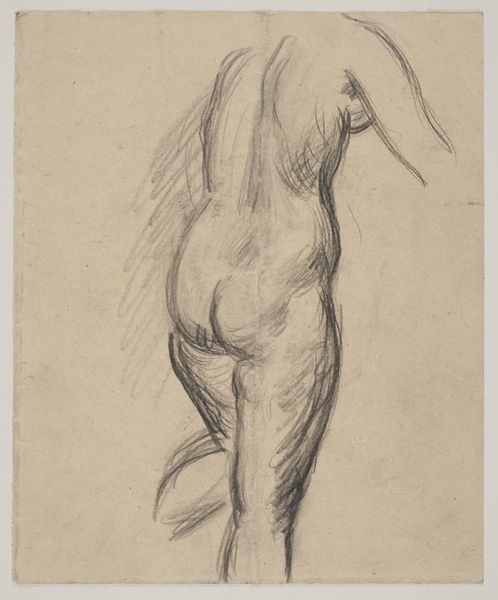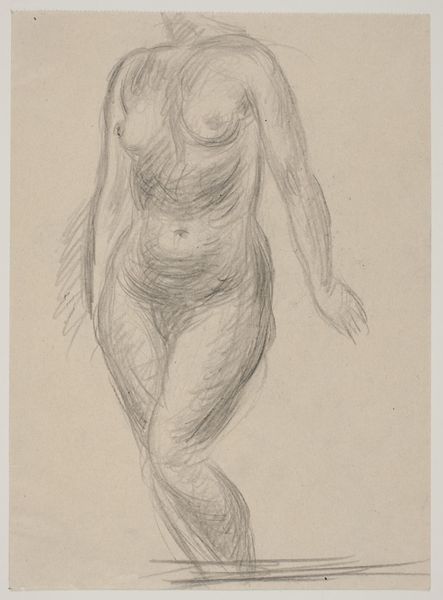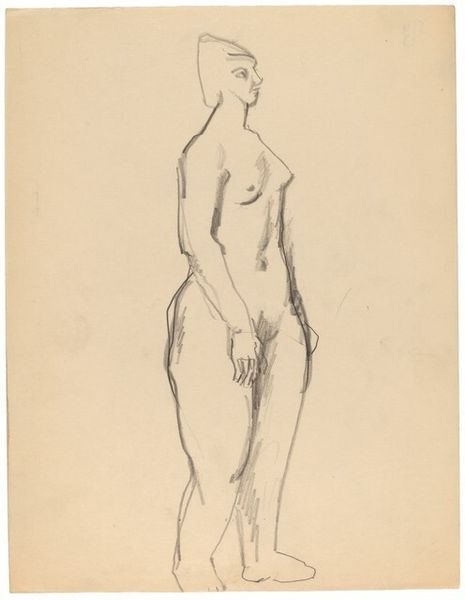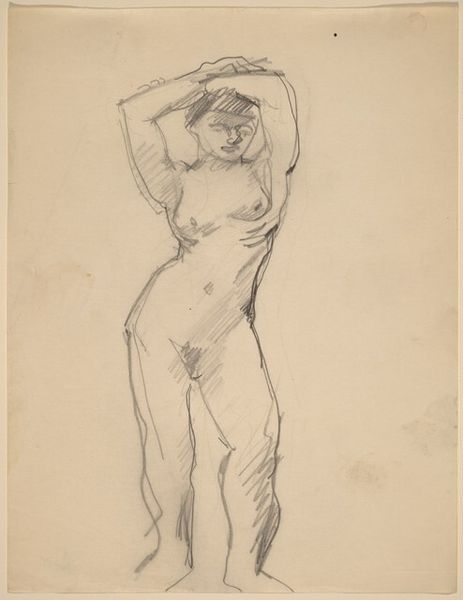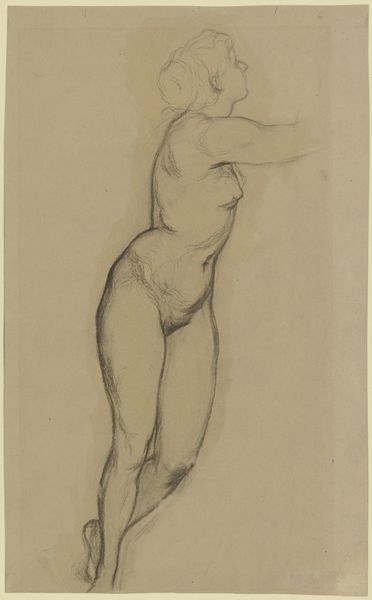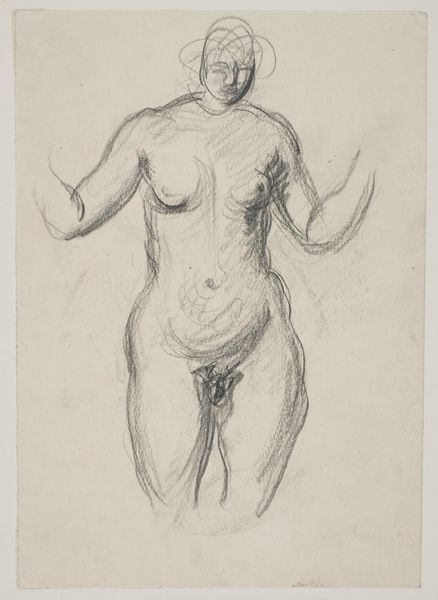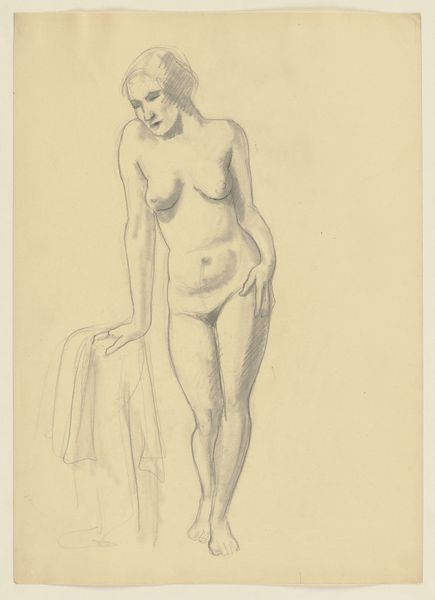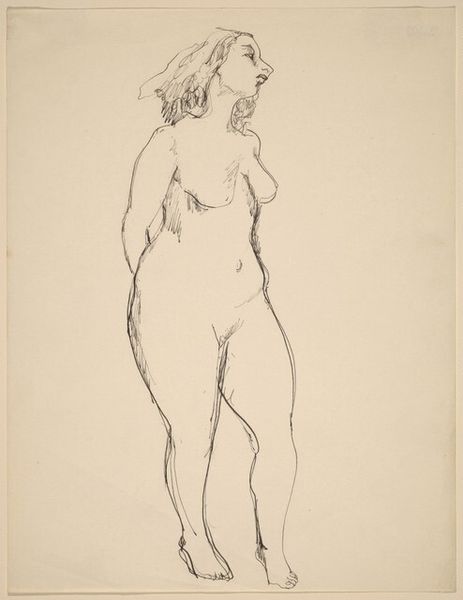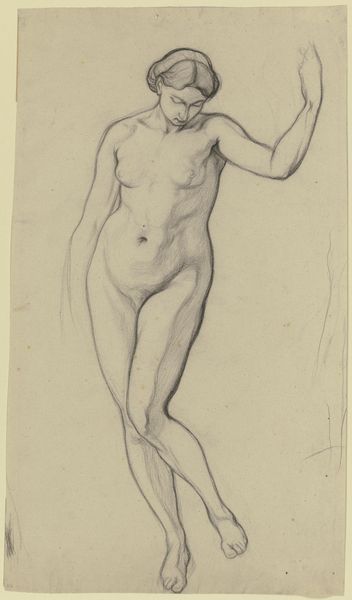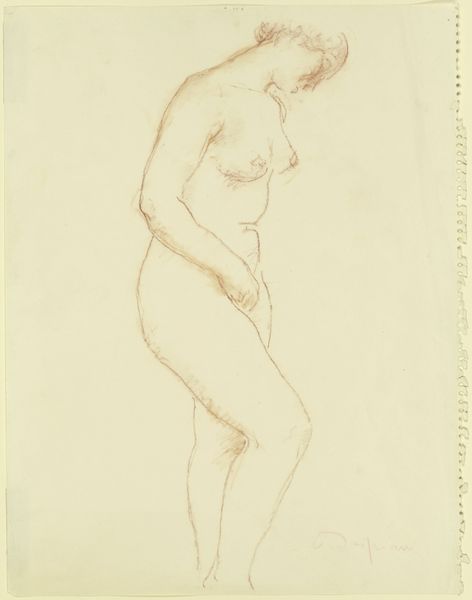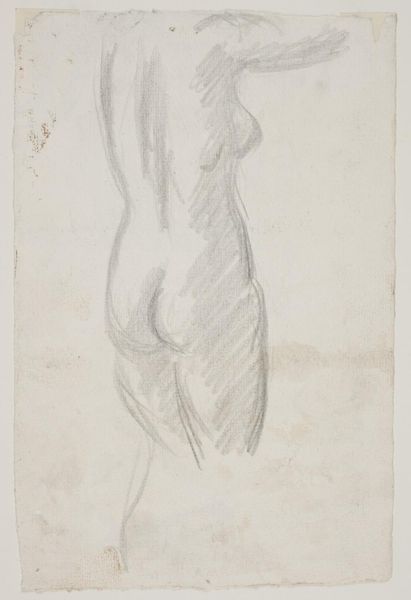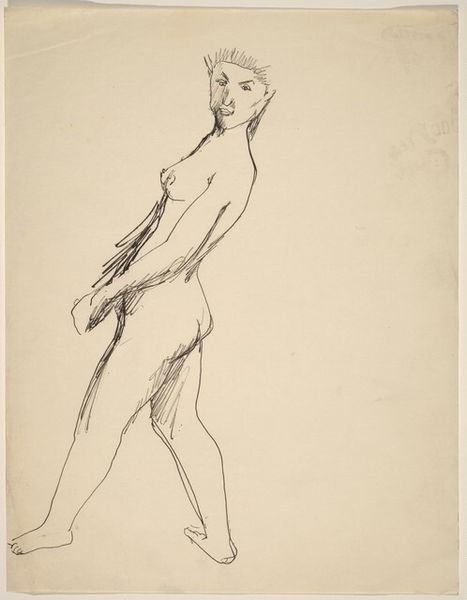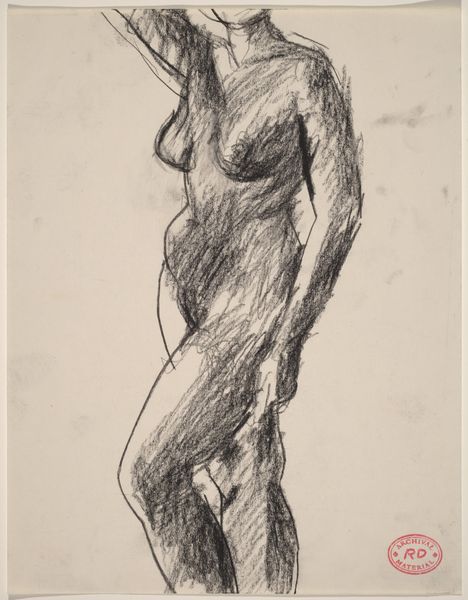
drawing, pencil
#
portrait
#
drawing
#
pencil sketch
#
figuration
#
pencil
#
nude
Dimensions: 250 mm (height) x 180 mm (width) (bladmaal)
Curator: Let's spend a moment with this work from SMK - Statens Museum for Kunst. It's titled "Stående kvindelig model", or "Standing Female Model," created by Vilhelm Lundstrom sometime between 1823 and 1923. It appears to be a pencil drawing. Editor: It strikes me as incredibly raw. You can almost feel the artist's hand moving across the page. The lines are quick, and there’s an honesty to the portrayal that is arresting. Curator: Absolutely. Considering Lundstrom's focus later shifted toward Cubism and classicism, a work like this gives us insight into the academic training grounding him in figurative drawing. There’s a clear engagement with the conventions of the nude, undoubtedly drawn from life. Editor: Which is exactly where the tension arises, isn't it? These institutions, like art schools, perpetuate particular viewpoints about bodies and labor, reinforcing hierarchies through this mode of artistic production. Look at the model’s posture, her lack of facial detail. The pencil becomes an instrument that turns flesh into a series of quickly captured forms. Curator: True, there’s a history of the objectification of the female body inherent in the genre. However, I find that the sketch-like quality somewhat mitigates this. It doesn't feel overly polished or idealized. It’s a study, perhaps for a more formal work, revealing the working processes. The medium matters, in that respect. Editor: Medium and the making. We can imagine the repetitive movements involved, the material realities of pencil on paper, a negotiation of power. Even the surface of the paper—its texture— plays a role in how the image is received, reflecting its value as disposable compared to a more precious painting surface. Curator: So you're seeing the imperfections as inherent in understanding this not as an object of beauty in and of itself, but documentation for something larger, in which the final presentation hides all of that labor and decision-making. Editor: Precisely. How the economics and social norms affected artistic practices in making these forms into currency, determining whether those studies are kept hidden in the collection drawers, like this one appears to have been, or celebrated. Curator: A poignant point about its institutional journey—a journey it prompts us to examine, layer by layer. Thank you for the dialogue about Vilhelm Lundstrom's work. Editor: Yes, material conditions of its production allow a glimpse beyond aesthetics, reminding us that even sketches carry complex stories.
Comments
No comments
Be the first to comment and join the conversation on the ultimate creative platform.
